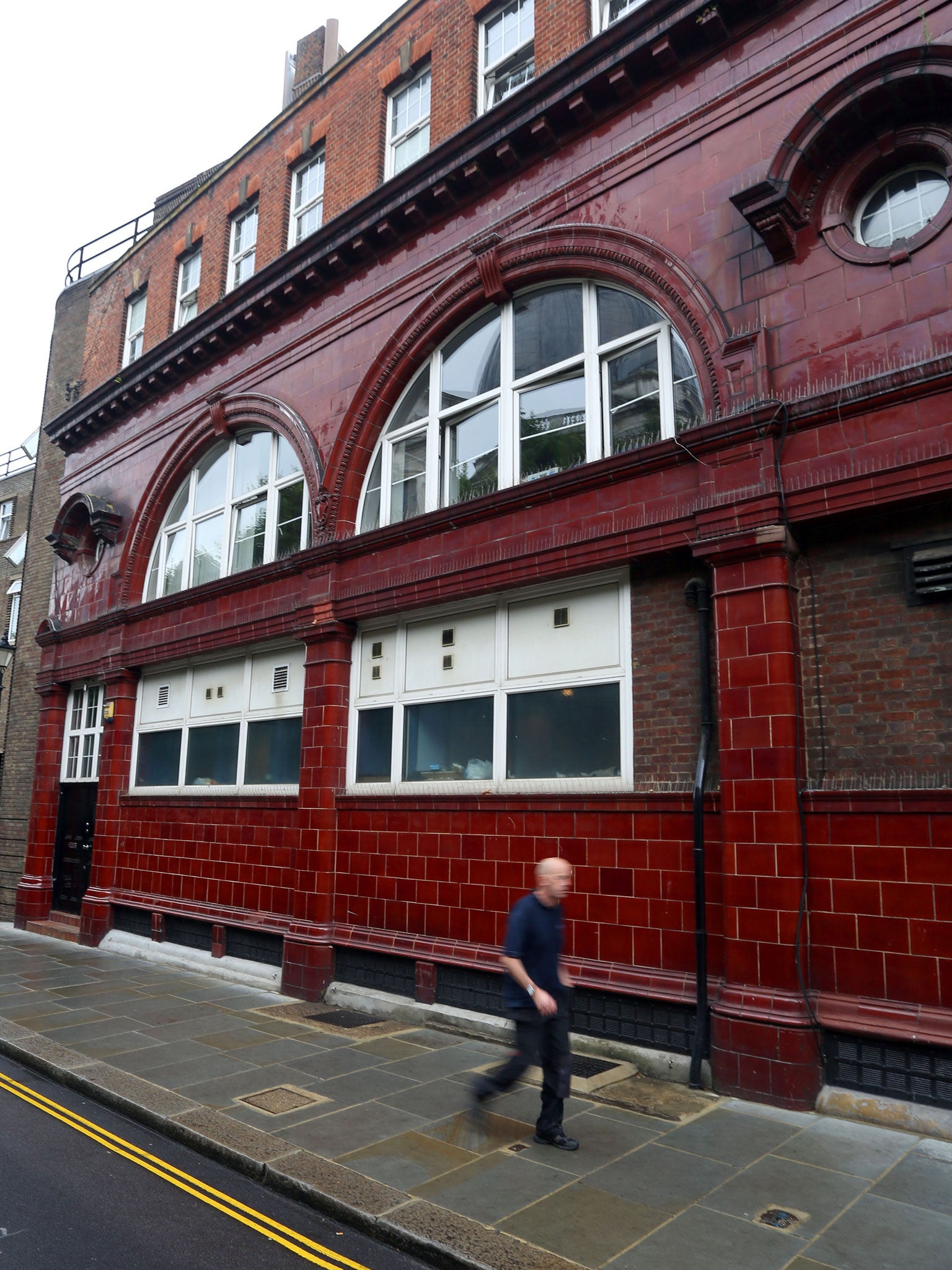Developers fight over Brompton Road Tube station famous for link to Adolf Hitler's Nazi deputy Rudolf Hess
Bidding war develops between Qatari royal family and mysterious Ukrainian billionaire

Your support helps us to tell the story
From reproductive rights to climate change to Big Tech, The Independent is on the ground when the story is developing. Whether it's investigating the financials of Elon Musk's pro-Trump PAC or producing our latest documentary, 'The A Word', which shines a light on the American women fighting for reproductive rights, we know how important it is to parse out the facts from the messaging.
At such a critical moment in US history, we need reporters on the ground. Your donation allows us to keep sending journalists to speak to both sides of the story.
The Independent is trusted by Americans across the entire political spectrum. And unlike many other quality news outlets, we choose not to lock Americans out of our reporting and analysis with paywalls. We believe quality journalism should be available to everyone, paid for by those who can afford it.
Your support makes all the difference.A disused London Underground station that housed the command bunker for London’s anti-aircraft defences during the Second World War is at the centre of a multimillion-pound bidding war between the Qatari royal family and a mysterious Ukrainian billionaire.
Brompton Road station, once situated on the Piccadilly line between South Kensington and Knightsbridge, is on the market for around £100m and is attracting interest from all the usual suspects at the top end of the capital’s lucrative property market.
The 28,000sq ft building near Harrods, which was closed to Tube passengers in 1934 due to a lack of demand, is understood be under consideration by the Qatari royal family, who also own the Shard, the former US embassy building in Mayfair and the athletes’ village from the 2012 Olympics.
Another bidder keen on the property, which is being sold by the Ministry of Defence as part of the Government’s cost-cutting drive, is said to be an anonymous Ukrainian billionaire who is understood to want to transform the building into a luxury home.
Competing against the two private bidders is a London-based entrepreneur who claims he wants to keep the building as a publicly owned heritage asset in memory of its role during the Second World War.
Ajit Chambers of the Old London Underground Company, which aims to develop disused Tube stations, said: “As the battle for Brompton Road begins, the public become a large influence as essentially they own this site as taxpayers. ”
Brompton Road opened in 1906 and the building still bears the distinctive red-glazed tiles of older Tube stations. The War Office bought the above-ground building for £22,000 in 1938 and it became headquarters of the Army’s 1st Anti-Aircraft Division. Floors were built into the lift shafts to create operations rooms, complete with a telephone exchange, pneumatic tubes to carry messages and a giant table map of southern England.
Winston Churchill visited the command centre and it is rumoured that Rudolf Hess, Hitler’s deputy, was questioned at the station after he crash-landed in Scotland in 1941 during a secret attempt to negotiate peace.
Mr Chambers, a former banker, wants to convert the rooftop into a garden, bar and restaurant area, while allowing tourists to travel underground to visit the drop-shafts.
He said: “A project that I started four years ago now has two other bidders who are rivalling me. I have support across Parliament and from inside Downing Street to keep this publicly owned heritage asset from being sold as a luxury home.”
It is understood James Arbuthnot, the chairman of the Defence Select Committee, is concerned about the potential sale of the station to private foreign ownership. He has written to the Defence Secretary, Phillip Hammond, to highlight the status of Brompton Road as a “heritage asset”.
Jones Lang LaSalle, the company handling the sale for the MoD, put the property on the market yesterday. A spokesman said: “At the very latest the sale needs to be completed by the end of March.”
End of the line abandoned stations
Aldwych, initially called Strand, is one of London’s most famous “ghost stations”. It opened in 1907 but its financial viability was perennially in doubt and, after running a peak hours service only for many years, the station closed for good in 1994.
Down Street, near Hyde Park, which closed in 1932, was used as an air raid shelter by Winston Churchill. A bath installed in 1939 has been dubbed “Churchill’s bath”.
The British Museum once had its own Tube station on the Central Line. It opened in 1900 but has not been used by the general public since 1933. Holborn station is a few hundred yards away.
Writer Neil Gaiman was inspired to write his novel Neverwhere by London’s abandoned tube stations. He created a secret world called “London Below” in which Angel, Hammersmith and Blackfriars were brought to life. He plans a sequel, The Seven Sisters, (Victoria Line).
Ian Johnston
Join our commenting forum
Join thought-provoking conversations, follow other Independent readers and see their replies
Comments